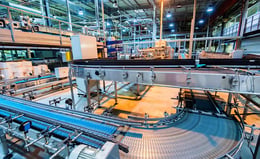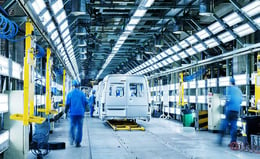Happy (Green) New Year! Why Sustainability Should be One of Your Resolutions in 2023
Nancy Sarpolis - January 05, 2023

It’s no surprise that environmental sustainability is becoming a key business imperative. A recent report shows that CEOs are placing it among their top 10 business priorities for the first time ever. And, as large global companies look at their impact on the environment, “more organizations are reaching into their value chains to understand the full greenhouse gas (GHG) impact of their operations,” according to the U.S. Environmental Protection Agency.
In other words, companies that have developed strategies to reduce GHG emissions that occur from sources controlled by the organization (Scope 1) and indirect emissions such as the purchase of electricity, steam, heat or cooling (Scope 2) are now starting to turn their attention to emission sources outside their scope, such as suppliers and transportation partners (Scope 3).
The lesson for manufacturers who supply parts, sub-assemblies or other systems and components to large OEMs is this: Sustainability needs to be on your list of 2023 New Year’s resolutions.
Lean can be green
Companies that want to reduce their environmental impact as well as improve productivity are in luck. Some of the same lean principles—and Industry 4.0 technologies—that organizations use to increase operational efficiency can also have a beneficial effect on GHG emissions. Digital solutions that optimize costs, energy performance and asset utilization provide a framework that can enable environmental, social and governance (ESG) outcomes for the enterprise and its customers, according to Gartner.
Advanced Planning Solutions (APS) are among those technologies that can help manufacturers make their operations more efficient. And, when companies optimize their operations, they can also achieve better environmental performance. Here’s how it works:
APS uses a variety of interconnected modules can look at the relationship between sales and production, plant capabilities, and the optimal schedule to maximize production efficiency. Planning and sequencing modules help manufacturers better understand how many materials they need, which equipment should be used, and the most optimal times to produce specific products. The production plan is then created, allowing companies to map out how much of a product they need to make, how much raw material it will require and how the product will be produced. Predictive algorithms in APS solutions take in live production data from the plant floor and use these insights to analyze equipment performance and optimize efficiency. Rules, constraints, parts availabilities and production facility capacities are taken into consideration at every point.
As a result, no materials, labor or energy are wasted.
Scenario Planning capabilities, when combined with APS, can also give the logistics team visibility into the production environment to reduce “empty miles” or unused capacity. Examples of this are delivering a single pallet with a trailer that’s 80% empty or returning with an empty trailer after making a delivery. Reducing empty miles reduces the number of trucks and traffic on the road. Delivery routes with multiple stops are optimized to minimize miles driven, reducing fuel expenses, GHG emissions, and driver labor.
Cloud services offer additional benefits
Cloud services can also be used to achieve sustainability benefits by allowing organizations to use only what they need, increasing utilization of shared resources and reducing environmental impacts. APS solutions that offer enhanced planning, scheduling, and sequencing capabilities in the cloud can improve decision-making capabilities and ensure that production planning is accurate and efficient, which means manufacturers consume fewer resources and produce fewer byproducts like GHG emissions for greater sustainability.
Conclusion
Companies are moving from incremental improvements to bolder, systemic approaches that create a net positive impact on the world. And, as they expand the scope of their efforts to include third parties in their environmental sustainability strategies, suppliers and transportation partners can proactive prepare by implementing digital technologies such as APS that increase operational efficiency while reducing their environmental impact.
If you want to learn more get your Guide to Production Planning
In this Guide you will learn:
-
How to build resilience
-
How to increase efficiency
-
How to use integrated APS planning services for production planning
-
What must-have features of an APS solution you need
-
Which KPI’s you can expect
LATEST POSTS
- Understand Circular Economy in The Manufacturing Industry
- How Can Industry 4.0 IT Integration Be Achieved Smoothly?
- The Significance of Order Sequencing in Discrete Manufacturing
- How to improve your Supply Chain Management: The Power of Control Towers
- Optimizing Human Resource Scheduling in Manufacturing: A Technological Approach



